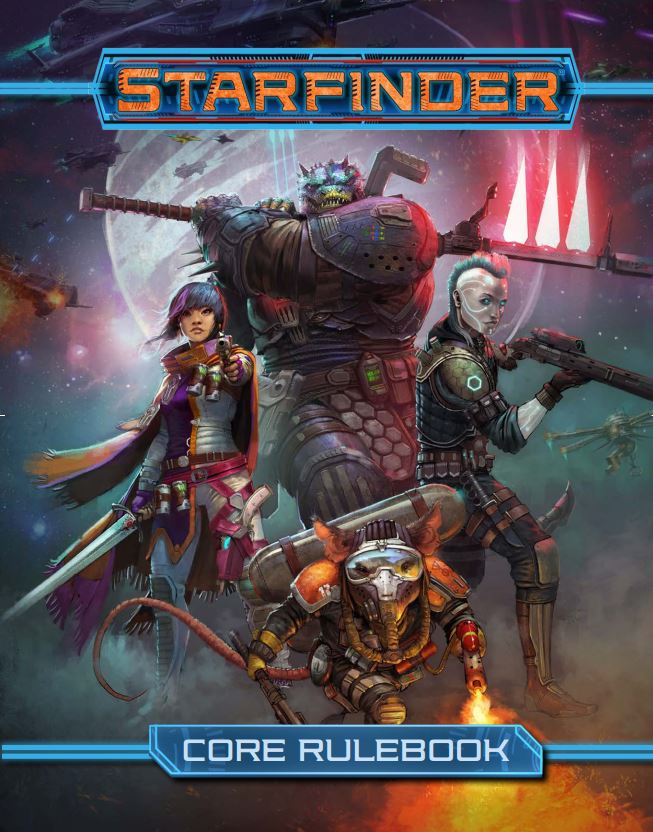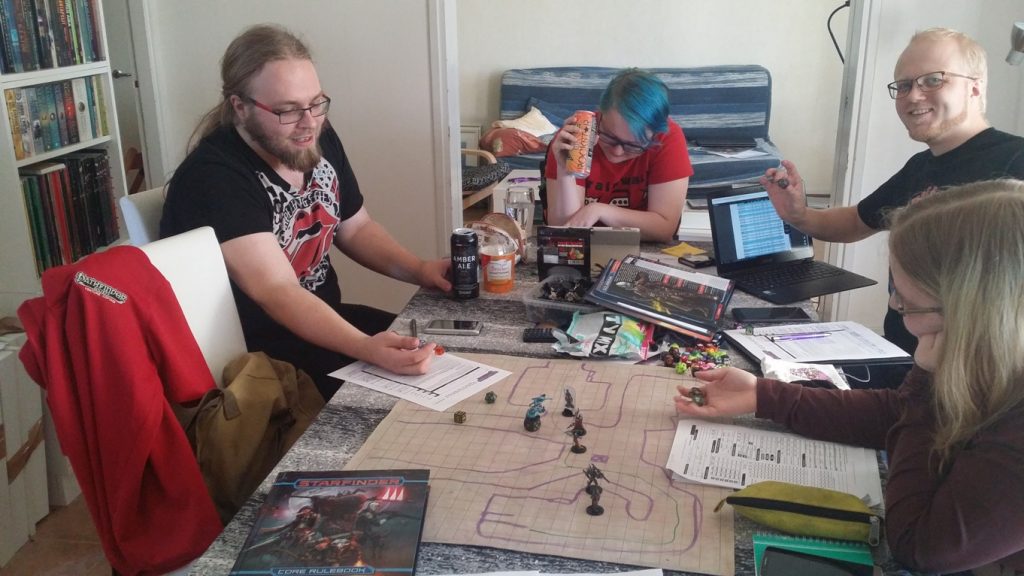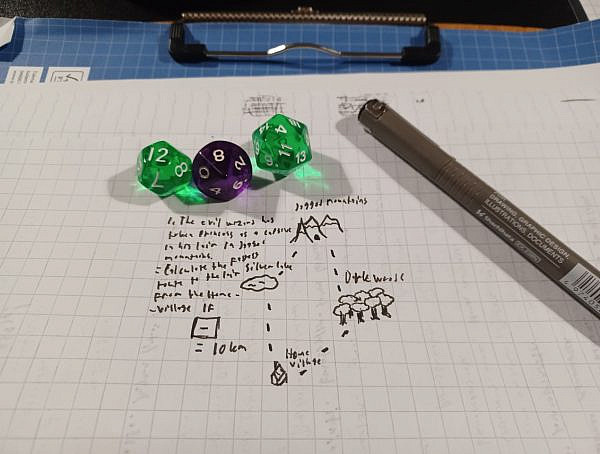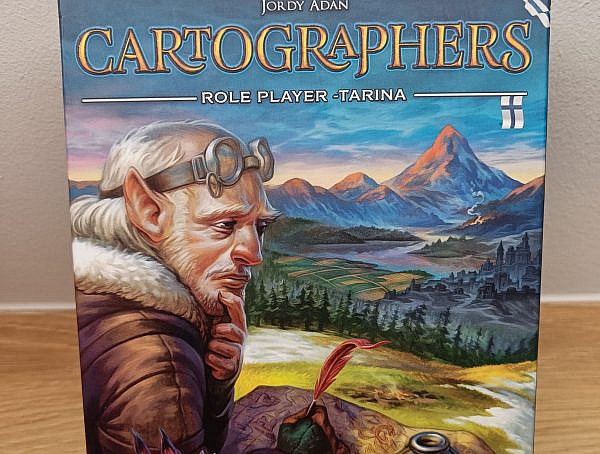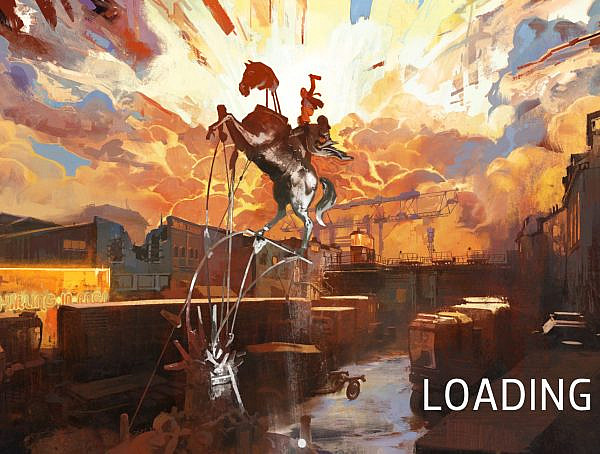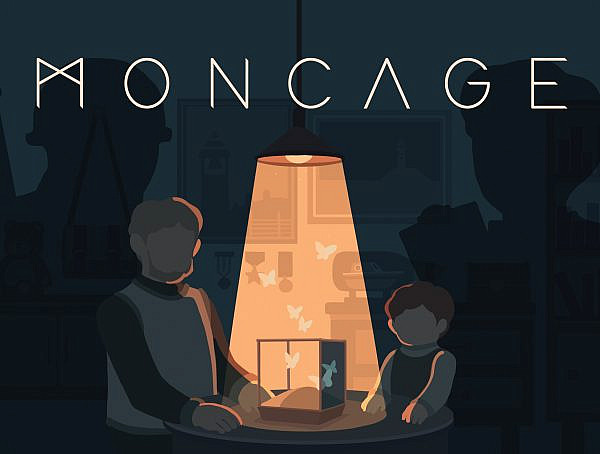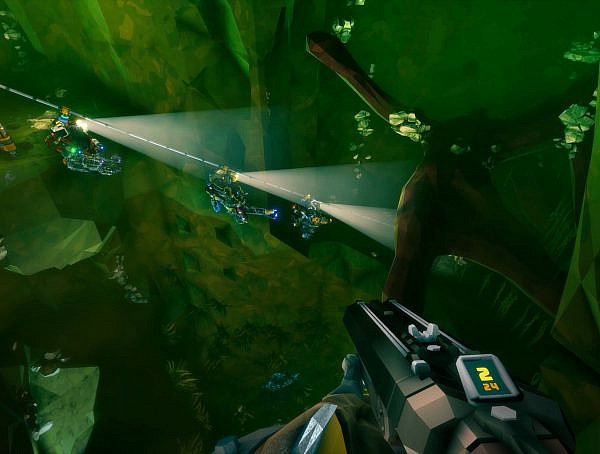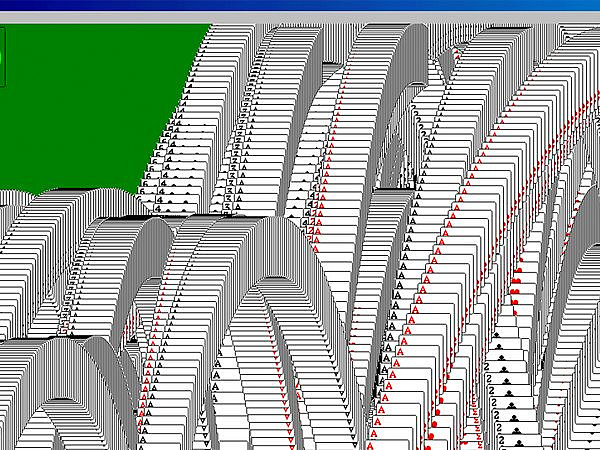Starfinder is a marriage of space opera and high fantasy, taking the tropes of traditional fantasy role-playing games into orbit. Drawing from Star Wars, Guardians of the Galaxy and plain, classic Dungeons & Dragons, it delivers a package of tactical combat, detailed character customization, and space goblins.
The game’s core rulebook clocks in at 524 pages in full colour. Most of it is dedicated to rules, with around a hundred pages of information on the game’s setting, the Pact Worlds, at the back of the book. Both the ruleset and the setting are sci-fi versions of the publisher’s earlier, very popular fantasy game Pathfinder. The result is not exactly beginner-friendly, but as a veteran I found it very rewarding.
Starfinder of course comes with classes and races. The character races fulfil the normal selection of sci-fi archetypes – there’s the warrior race, the androids, the telepaths, and so on. The character classes number seven. Two classes are spellcasters, and one, the solarian, is essentially an off-brand jedi. The classes run up to 20 levels, levelling up in more than one class is an option, and they are remarkably customizable.
There’s also a system for starship combat, where every member of the group has a post on the group’s ship, each fulfilling their own task in turn during battle – captain, pilot, gunner, engineer, or science officer. This is a nice piece of genre simulation. It’s assumed that the party has access to one larger ship, a freighter or an explorer, though if the players so desire, a wing of fighter pilots is equally doable.
The game’s overriding design imperative is balance, even at the expense of verisimilitude. This is most visible in the equipment list, where more efficient weapons have progressively higher price tags, putting them out of reach of lower-level characters and reaching absurd orders of magnitude at higher levels. It remains to be seen how it holds up as additional rules material mounts up over time, but after 28 hours of playtime, I’m willing to call the core rules a success.
The Pact Worlds are a rainbow of influences from different works of sci-fi from H.G. Wells to N.K. Jemisin, from pulp to transhumanism. Whatever story you wish to play out, there should be room for it. It’s not exactly thematically unified, but it is also the size of a solar system. There’s room for more than one kind of story. The intersection of sci-fi and fantasy elements produces some quirky details. This being fantasy, there is a god of trade and money. This being sci-fi, his church is also a megacorporation.
In conclusion, Starfinder is a mechanically heavy but very entertaining game. Beyond the core rules, the product support promises to be robust, and I predict the system an uncommon degree of longevity. Its design goals are very specific and it is not for everyone, but it works.
Publisher: Paizo Publishing
Release date: August 2017
You might also like
More from Game Reviews
Moncage Review: A Puzzle Game with Mind-Boggling Optical Illusions
Solving a huge #optical_illusion #puzzle in a tiny cube to discover a dark, #emotional story of trauma
Mining, Mayhem, and Bugs: A Deep Rock Galactic Review
Fight monsters, mine riches, and cause chaos with your dwarf crew — welcome to Deep Rock Galactic!
Microsoft Solitaire: classic games to kill time
Perhaps the most played games in offices worldwide, Microsoft Simulator is a pinacle of design from the era where games …







